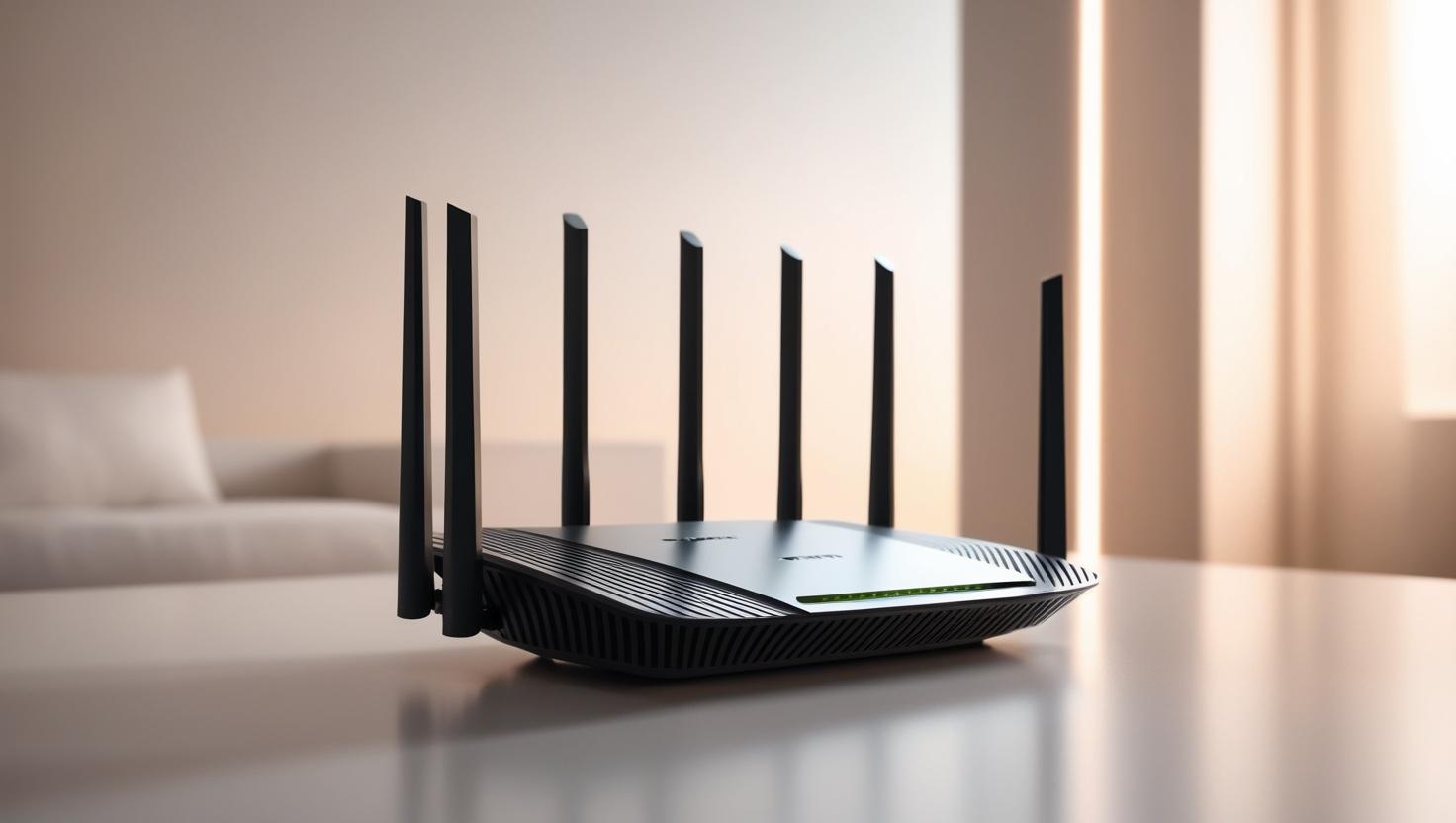Is Wi-Fi 7 the Future of Fast, Seamless Connectivity?
The newest wireless networking technology, Wi-Fi 7 (802.11be), has the potential to completely change how we connect to the internet. Wi-Fi 7 isn’t completely new, but it’s gaining momentum and will be used more widely in 2025 and beyond. As Wi-Fi 6E‘s replacement, it offers major improvements that should improve performance, speed, and dependability. Here is a closer look at some of its main characteristics:
Key Features of Wi-Fi 7:
- Ultra-Fast Speeds (Up to 46 Gbps):
Wi-Fi 7 boasts a remarkable maximum speed of up to 46 Gbps, a substantial improvement over Wi-Fi 6. This speed boost will enable customers to enjoy ultra-fast downloads, flawless streaming of 4K and 8K video, and lag-free gaming.
- Expanded Frequency Bands (2.4 GHz, 5 GHz, and 6 GHz):
Wi-Fi 7 operates in three frequency bands: 2.4 GHz, 5 GHz, and 6 GHz. The inclusion of the 6 GHz band is a major changer since it adds spectrum, reduces network congestion, and improves overall performance. This allows for more devices to connect simultaneously without sacrificing speed or reliability.
- Lower Latency for Smoother Experiences:
With the inclusion of the 6 GHz band, Wi-Fi 7 dramatically reduces latency. This means reduced delay in data transfer, which is especially useful for real-time activities such as video conferencing, online gaming, and virtual reality (VR) or augmented reality (AR) apps.
- Improved Load Balancing:
Wi-Fi 7 improves load balancing among devices. The 6 GHz spectrum helps to distribute data more equally, minimizing network slowdowns when multiple devices are connected at once. This leads to a more stable and reliable connection, especially in high-traffic environments.
- 320 MHz Bandwidth (Double the Bandwidth of Wi-Fi 6):
Wi-Fi 7 has a 320 MHz bandwidth, which is twice as large as the 160 MHz bandwidth provided by Wi-Fi 6. Broader bandwidth allows for more data to be carried at once, increasing network efficiency and speed for high-demand applications.
- 4096-QAM (Quadrature Amplitude Modulation):
Wi-Fi 7 incorporates 4096-QAM technology, which allows for higher data density. This means that more data may be crammed into the same amount of spectrum, resulting in faster speeds and better utilization of the available capacity. This is especially useful in high-density settings like businesses, public spaces, and households with numerous connected devices.
- More Connectivity with Multi-Link Operation:
Wi-Fi 7 introduces Multi-Link Operation (MLO), which allows devices to connect to various bands (e.g., 2.4 GHz, 5 GHz, and 6 GHz). This enhances overall throughput and reliability by automatically selecting the appropriate band for each connection.
- Device Adoption and Future Growth:
As Wi-Fi 7 gains popularity, it is projected to appear in a wide range of devices, including smartphones, laptops, and routers. Notably, the iPhone 16 is one of the first major devices to support Wi-Fi 7, indicating the start of widespread consumer usage. Over time, more devices, particularly high-performance ones, will adopt this new standard.
Conclusion:
Wi-Fi 7 is a major leap forward in wireless connectivity, offering:
- Speeds up to 46 Gbps
- Support for 2.4 GHz, 5 GHz, and 6 GHz bands
- Lower latency and improved load balancing
- 320 MHz bandwidth (double that of Wi-Fi 6)
- 4096-QAM for enhanced data density
- Multi-Link Operation for improved connectivity
As more devices implement Wi-Fi 7, consumers can expect faster, more consistent, and efficient internet connections, which will improve everything from gaming and streaming to work-from-home setups and smart home experiences. Wi-Fi 7 will usher in a new era of seamless, high-performance wireless connectivity.




